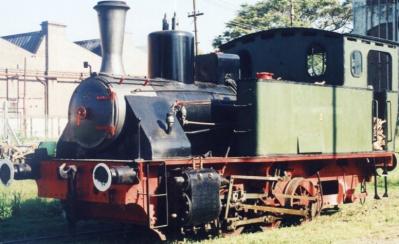Ferroclub Argentino is busy refurbishing trains and railroad history

Back in the 1990’s and thanks to the bright idea of former Argentine President Carlos Menem, lots of train cemeteries began to pop up across the country, tracks gathered weeds and stations began to crumble apart. And then with the present administration there was the pie-in-the-sky talk about construction of the so-called "bullet train" uniting Buenos Aires, Rosario and Córdoba. But let’s be more pratical...
Some train fans calling themselves the Ferroclub Argentino rubbed heads with the Museo Nacional Ferroviario and now they are busy at work preserving not only old documents, artefacts, but also locomotives and wagons. Oh. If you haven’t yet heard of them, you might have seen some of the old trains in movies such as "Evita" and "Seven Years in Tibel." In fact, a handy $50,000 some thousand dollars was generated that way.
If you’re interested in seeing the trains and some of the work being done on them, you might stop by the defunct Remedios de Escalada and climb aboard vintage wooden passenger cars, sau the 1925 British Midland RY or the luxurious Argentine Ferrocarril Sud of the same year. There are steam diesel locomotives from Europe and the U.S., and antique dining car serving refreshments and even a mini-train for kids.
Going back a bit in history, we find the first Argentine train line opened in September of 1857, a 13 km route from near what is now the Colon theater to the Flores neighborhood. Sixty years later the Argentine rail system was one of the largest in Latin America, coinciding with the repression of indigenous popularions in the interior and the boom of what has been called the "Belle Epoque." The British played a key role in the development of the lines and that served to facilitate exports to that country--you can still see the remains of that in the names of many communities and train stations...and the sports activities such as soccer, cricket and golf that accompanied the British railway builders.
When General Juan Domingo Perón came to power in the mid 1940’s, the railways were nationalized and placed under the management of the Ferrocarriles Argentinos. That led initially to a great spurt in track mileage, swelling to 45,000km. However, subsequently and thanks to "neo-liberal" think tanks and World Bank recommendations, President Menem began to tear the industry apart, favoring truck transportation but failing to build the necessary highways. Deficits continued to rise, costing the state around $400m per year in the 1990’s just to maintain what was left of the system...and ghost towns grew up in previous prosperous towns criss-crossed by the trains.
Since then there has been a steady deterioration of the service, essential for workers and a source of livlihood for countless small towns across the country. Current President Cristina Kichner has repeatedly expressed her desire to reverse this process and some six billion pesos have been alloted to improve transport in the 2009 budget...but only time will tell whether the once effecient and active railways can come back to life.
0 comentarios